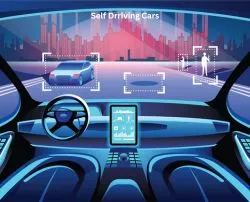Introduction
Autonomous vehicles started as remote fantasies during the past but presently show fast progress toward reaching widespread implementation. Autonomous vehicles currently increase in numbers across roads because of the advancements in artificial intelligence machine learning and robotics. Are human drivers facing permanent extinction from the driving industry?
The support for self-driving cars grows stronger as people consider them to minimize accidents and use roadways efficiently despite public doubts about safety protocols and ethical problems and employment effects. The analysis of autonomous vehicle self-driving cars pros and cons assessment will determine whether we are facing human replacement as drivers.
The Evolution of Self-Driving Cars
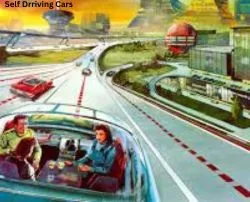
A complete journey toward self-driving vehicle autonomy has stretched throughout several decades.
The initial concepts for self-driven automobiles emerged during the 1920s yet practical tests using AI-driven systems started during the 1980s.
Self-driving technology advancement reached a critical point when companies like Google (Waymo), Tesla and Uber respectively tested their systems during real driving scenarios.
Local automobile manufacturers have introduced multiple semi-autonomous components in modern vehicles yet full self-driving capabilities are still under development.
How Do Self-Driving Cars Work?
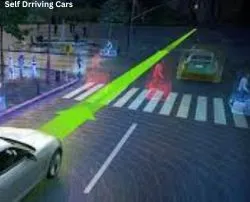
Self-driving cars implement modern technological advancements from multiple streams to function.
Machine Learning technology together with Artificial Intelligence(AI) systems track enormous real-time data amounts for driving choices.
The sensors of Lidar, Radar and Cameras work together to identify traffic signs and both obstacles and pedestrians.
Self-driving vehicles operate in five levels which start from Level 1 basic driver-assistance and end at Level 5 where human intervention is not needed.
Self-Driving Cars Pros and Cons
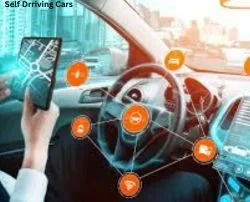
Pros of Self-Driving Cars
- Reduced Accidents & Improved Safety:
Self-driving vehicles conduct accident-free driving through eliminating human mistakes which comprise intoxicated driving along with driver fatigue and inattentiveness thereby potentially reducing traffic accidents by 90%.
- Traffic Efficiency & Reduced Congestion:
The communication capabilities of AI drones enable them to create more efficient traffic routes which shrinks the number of traffic backups.
- Accessibility for Elderly & Disabled Individuals:
Through self-driving cars individuals bound to physical disabilities will achieve independence they otherwise couldn’t reach.
- Fuel Efficiency & Environmental Benefits:
Dependable self-driving vehicles execute tasks with increased precision and decrease their need to brake or speed up what results in reduced fuel usage and emission output.
- Increased Productivity:
Travelers can spend their transportation duration on performing professional tasks or enjoying themselves without devoting attention to driving.
Cons of Self-Driving Cars
- High Cost of Development & Implementation:
The high costs associated with self-driving technology prevent most common people from purchasing them.
- Ethical Dilemmas in Accident Scenarios:
AI technology must decide which is the safer course of action when it encounters unavoidable accidents as between striking pedestrians or veering into another car.
- Job Losses in Transportation:
Multiple millions of drivers from trucker to taxi to delivery service employees risk losing their employment.
- Cybersecurity Risks & Hacking Threats:
An illegally accessed self-driving car poses the risk of generating fatal outcomes.
- Limitations in Extreme Weather:
The integration of sensors suffers from performance reduction when operating in severe conditions that include rain, snow or fog.
Are Human Drivers Becoming Obsolete?

The rapid technological progress has not yet evolved to replace human drivers in all scenarios. The driving features of present self-driving cars depend on human operator intervention in challenging road scenarios. The effective spread of automated vehicles faces delays because of legal and ethical obstacles.
Real-World Testing & Failures
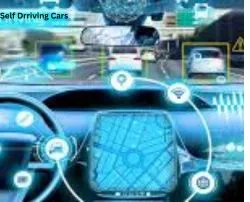
The technology operated by autonomous vehicles contains various deficiencies that need addressing. Several major incidents involving autonomous vehicles can be noted including:
The death of a pedestrian occurred when Uber operated its self-driving car during 2018.
The occurrence of crashes using Tesla Autopilot functions created doubts about whether drivers use too much automation in their driving habits.
Waymo’s safety challenges, despite extensive testing.
Legal & Ethical Concerns

Who is Responsible for Accidents? Car manufacturers, software developers, or the vehicle owner?
Such vehicles maintain a substantial collection of personal user data.
The current situation with insurance for self-driving vehicles creates confusion because policies require adjustment.
Future of Self-Driving Cars

Professional analysts foresee self-driving cars becoming mainstream across the market within the next decade to twenty years.
Will Human Driving Be Banned? The prohibition of human-operated vehicles may happen when autonomous vehicles establish themselves as safer than human-controlled vehicles.
Legislative authorities require establishing specific standards that ensure safe operations for autonomous vehicles.
Balancing Automation & Human Control

These systems will work with operators to let them step in and take over specific situations. Tesla’s Autopilot system needs human engagement during its operation.
The Psychological Impact of Losing Control

Driving offers pleasure to people who simultaneously lack faith in AI-driven choices. People need to adjust their societal norms because a cultural transition will be necessary before they accept giving up manual control to fully autonomous vehicles.
The Role of Self-Driving Cars in Smart Cities
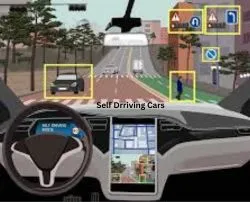
Modern transit systems will undergo transformation because of autonomous taxis that will operate with ride-sharing options.
Artificial Intelligence applied to traffic management systems provides the ability to decrease accidents together with traffic congestion.
Most people wonder whether they can put their trust in autonomous vehicles at the present time.
Should You Trust a Self-Driving Car Today?
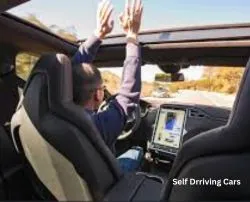
The promising potential of self-driving technology exists but does not extend to absolute perfection. The level of trust an independent vehicle currently receives for operation depends both on human acceptance of this technology and on the AI systems’ technological advancements toward reliability.
Conclusion
Autonomous cars are remodelling the future travel industry through both helpful aspects and difficult hurdles to overcome. Self-driving technologies have the potential to enhance road security and efficiency but features unresolved issues regarding cost expenditure and systems security alongside ethical questions. Human drivers will maintain their presence on the roads in the short term until the continuous technological improvements lead to widespread AI vehicle operations.
FAQs
Yes, in theory. Self-driving vehicles remove unsafe behaviours caused by humans such as driving under the influence and using distractions while engineers must conduct more tests to improve the technology.
The key obstacles in self-driving cars include their expensive costs together with ethical problems and cybersecurity threats and potential workplace elimination.
Not in the near future. Autonomous vehicles will not take over the roads until several key problems get solved.
The pathway to widespread adoption of self-driving vehicles runs through 10 to 20 years according to experts although regulatory and technological requirements must be eliminated first.
AI receives driving data to make decisions about control while gradually building knowledge of Nuevo’s methods to safely handle roads.


